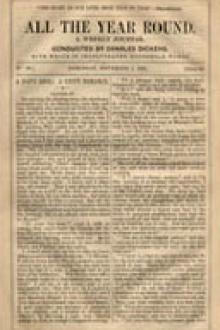Struggles and Triumphs P. T. Barnum (the beginning after the end read novel .TXT) 📖

- Author: P. T. Barnum
Book online «Struggles and Triumphs P. T. Barnum (the beginning after the end read novel .TXT) 📖». Author P. T. Barnum
Some of the largest and most prosperous manufactories in the United States are located in the new city. Among these are the Wheeler & Wilson Sewing Machine Manufactories, which cover four entire squares, with fireproof buildings, are rapidly extending, and employ more than one thousand operators; the Howe Sewing Machine Factory is also an immense edifice, employing nearly the same number of men; Schuyler, Hartley, Graham & Company’s great cartridge and ammunition works, almost supply the armies of the world with the means of destruction; besides these, the Winchester Arms Manufactory for making the “twenty-shooter breechloader”; a large brass manufactory; an immense hat manufactory; and Hotchkiss, Sons & Company’s Hardware Manufactory, are among the more prominent establishments, and other and like concerns are constantly adding. Indeed, at this time (1869) one-fourth of the population and three-fourths of the manufacturing capital and business of Bridgeport are located on the east side within limits which, in 1850, contained only six old farm houses.
The following details respecting the business of some of the largest establishments will give an idea of the manufacturing industries of East Bridgeport. The Wheeler and Wilson Manufacturing Company employ more than $4,000,000 in their business. Their employees number ten hundred, and they manufacture an average of three hundred sewing machines per day; the total number of machines manufactured up to July 1, 1869, is over four hundred thousand, and the factories cover six and one-half acres of ground. The Union Metallic Cartridge Company, Messrs. Schuyler, Hartley, Graham & Co., have a capital of $350,000, employ two hundred and fifty men, and manufacture cartridges and primers of Berdan’s patent military and sporting caps, and elastic gun waddings, at the rate of 1,000,000 cartridges, 720,000 primers, and 720,000 caps per week, and to July 1, 1869, they had manufactured 50,000,000 cartridges. The Bridgeport Brass Company employ two hundred men, have a capital of $150,000, and manufacture rolled brass wire and tubing, kerosene burners, lamp goods, corset steels, oil cans, etc., and roll and use in these goods 1,000,000 pounds of brass a year. The Winchester Arms Company have a capital of $450,000, employ three hundred men, and manufacture the Winchester rifle, cartridges and ammunition. The Howe Machine Company have a capital of $300,000, employ five hundred men, and manufacture sewing machines at the rate of one hundred and fifty per day. Messrs. Hotchkiss and Sons, with a capital of $162,500, and one hundred and twenty-five men, manufacture hardware, currycombs, game traps, and harness snaps to the amount of $20,000 per month. The Bridgeport Manufacturing Company, with fifty men, and a capital of $300,000, manufacture the American submerged pump. The Odorless Rubber Company, with fifty men, and $200,000 capital, manufacture soft rubber goods, hose, clothing, etc. The American Silver Steel Company, manufacture steel from the Mine Hill, Roxbury, Connecticut, Spathic ore, and employ two hundred and fifty men, and a capital of $500,000. Messrs. Glover Sanford and Sons, employ two hundred and fifty men, and manufacture two hundred and fifty dozen wool hats per day. The New York Tap and Die Company, with a capital of $150,000, and one hundred men, manufacture taps, dies, drills, bits, etc. These companies thus employ about six and one-half millions in capital, and nearly twenty-seven hundred men, and expend more than $2,000,000 a year in wages to the operatives.
In addition, there are several substantial brick blocks devoted to business; there are book stores, drug stores, dry goods stores, jewelry stores, boot and shoe shops and stores, tailoring and furnishing establishments, more than twenty grocery stores, six meat markets, three fish markets, coal, wood, lumber and brick yards, steam flouring mills, and a large brick hotel. The water and gas supplies are the same as those afforded on the other side of the river. It is quite within the bounds of probability that in the course of twenty years, the east side will contain the larger proportion of the inhabitants. A post-office and a railway station will soon be built on that side of the river. A new iron bridge is about to connect the two parts of the city, affording additional facilities for intercommunication. In 1868, March 2, a special committee of the Common Council reported the census of the City of Bridgeport as follows: First ward, 7,397; Second ward, 4,237; Third ward, East Bridgeport, 5,497; total, 17,131. In this enumeration, our new city contained nearly one-third of the entire population, and its increase since has been far more rapid than that of any other part of Bridgeport.
The entire City of Bridgeport is advancing in population and prosperity with a rapidity far beyond that of any other city in Connecticut, and everything indicates that it will soon take its proper position as the second, if not the first, city in the State. Its situation as the terminus of the Naugatuck and the Housatonic railways, its accessibility to New York, with its two daily steamboats to and from the metropolis, and its dozen daily trains of the New York and Boston and Shore Line railways, are all elements of prosperity which are rapidly telling in favor of this busy, beautiful and charming city.
XXXVI More About the MuseumAnother Reopening—A Cherry-Colored Cat—The Cat Let





Comments (0)